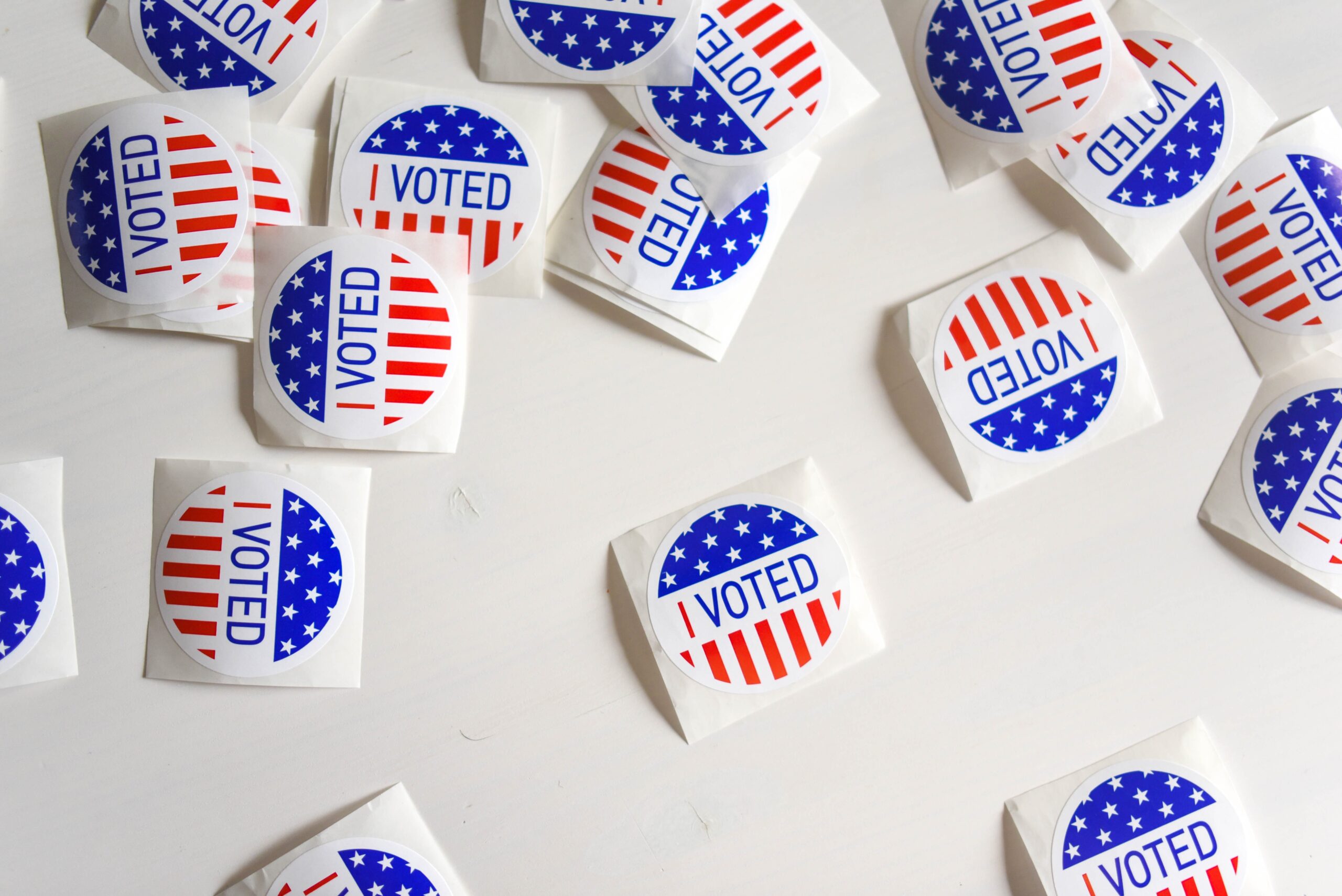The true bulwark against Trumpism is at the state and local level.
In the eyes of many locals, Nate McMurray’s campaign was a fool’s errand. He was running for Congress as a Democrat in New York’s 27th congressional district, where a greater percentage of residents voted for Trump in 2016 than in any other district in the state. District 27 is vast: it includes Orleans, Genesee, Wyoming, and Livingston counties, parts of Erie, Monroe, Niagara, and Ontario, suburbs of Buffalo and Rochester, and farm country; altogether, it is home to over 700,000 people. Around 42 percent of voters are registered with the Republican or Conservative parties.
McMurray is a fierce critic of former president Trump; he champions Medicare For All, gun control, and legalizing marijuana. When he first ran, he lost narrowly to Republican Chris Collins, who was then under federal indictment; Collins later resigned from Congress and pled guilty to conspiracy to commit securities fraud. Celia Spacone, a retired psychologist who was a McMurray campaign volunteer, told me in 2019, “Collins was indicted on felony charges, and people still didn’t want to hear about a Democratic candidate.”
After Collins resigned, McMurray ran against Republican nominee Chris Jacobs in a June 2020 special election to fill Collins’ seat, and again lost by a relatively narrow margin. When McMurray challenged Jacobs in the November 2020 general election, he lost by a much wider margin. (The presidential election boosted turnout across the board, leading to a surge of Republican voters.)
Recent research suggests that the Democratic Party might have benefited from McMurray’s willingness to run in a race that he was all-but-predestined to lose. The mere fact that a forceful, energetic candidate ran a high-visibility campaign in the district mobilized volunteers, energized Democrats, and might even have boosted Joe Biden’s vote share.
According to election data compiled by the Daily Kos, Trump beat Hillary Clinton by 25 points in District 27 in 2016. District voters went for Trump again in 2020, but the margin narrowed significantly, from 25 to 16 points. There are a number of possible reasons for that shift, including the pandemic and/or local voters’ preference for Biden over Clinton. But the fact that a Democrat put up a fight was good for democracy—and good for the party. (Collins faced a Democratic challenger in 2016, too, but her campaign didn’t attract as much attention as McMurray’s, in part because her platform wasn’t as bold and Collins wasn’t yet under indictment; as a result, the race wasn’t as close.)
As a candidate, McMurray worked hard and made a point of courting supporters in often-overlooked rural counties. Rural Democratic county committee chairs were especially supportive of his campaign. “Nate brought a lot of energy and passion to his races that really excited a grassroots following,” Judith Hunter, chair of the Livingston County Democratic Committee, told The Conversationalist. “That was a very impressive thing and surely helped candidates up and down the ballot.”
Hunter also chairs the Democratic Rural Conference of New York State, which represents New York’s 47 rural counties (the state has 62 counties in total). It can be tough to get people to show up to volunteer and vote for down-ballot candidates, she said, and it was easier to recruit campaign volunteers for McMurray because he was running for Congress. Still, she added, “Once people understand what a campaign needs in terms of volunteer power, it’s something a certain proportion respond to, and they’re not going to go away.”
Recently, the progressive organization Run For Something partnered with data firms Kinetic21 and BlueLabs to analyze the effect of down-ballot races on Biden’s performance in the 2020 presidential election. They found that contested state legislative races—those in which both Democrats and Republicans ran, rather than just Republicans—yielded a small but notable (0.3-1.5 percent) boost for Biden. Even when a down-ballot Democrat loses, the fact that they bothered to run can benefit a presidential candidate. This is known as the “reverse coattails” effect—the reverse happens when a down-ballot candidate rides the “coattails” of a popular presidential candidate.
Ross Morales Rocketto, co-founder and chief program and recruitment officer of Run For Something, explained during a phone interview why progressive candidates should run, even in places where they are likely to lose. One reason is that doing so could boost the candidate at the top of the ticket. Another big reason, he said, citing an old sports adage, is that “You miss 100 percent of the shots you don’t take.” Given how unpredictable the results of redistricting can be, the Democratic Party doesn’t know which races may turn out to be competitive. And given that the most recent census likely undercounted Latinos, Rocketto said, Democrats should rethink their tendency to avoid running candidates in deep-red areas.
“What ends up happening is that people who live in these areas only see Democrats as the caricatures they are on Fox News or Parler or Infowars or other conservative media outlets,” he said. “But when you have a candidate there, going to their door, they get to see one of their neighbors—somebody who actually lives in their community and likely shares some of their values—talking about another way [to address local problems].” It’s especially effective, Rocketto noted, when candidates stay focused on local issues. Rocketto sees ensuring that Democrats run for local office even in districts where they have little chance of winning as part of the long-term work necessary to reverse “some of the polarization that we currently see.”
In 2016, Leah Greenberg cofounded the progressive organization Indivisible, which she now co-directs, to help counter Trump’s agenda. Greenberg, whose family is from small-town Alabama, has also spoken about how powerful it can be for residents of red and/or rural areas to encounter self-identified progressives in their communities. Democrats who live in red states sometimes compare the experience of revealing their politics to friends and neighbors to LGBTQ peoples’ experience of “coming out.” As Hannah Horick, who chairs the Ector County Democratic Party in Texas, told Politico in 2020, a number of West Texas Democratic organizers are also openly LGBTQ. According to Horick, a friend once told her it was harder to come out as a Democrat in West Texas than it was to come out as gay.
Running as a Democrat in places that have historically been hostile to Democrats is less quixotic than it used to be. This is partly because voters of color have grown as a share of the electorate in recent years, while white voters, who are likelier to support Republicans, have declined. Hispanic voters account for increasingly large shares of the electorate, particularly in battleground states like Arizona, Florida, and Nevada, and red states like Texas. And thanks to the extraordinary efforts of local organizers and pro-voter registration, anti-voter suppression groups like Fair Fight, around 130,000 more black people registered to vote in Georgia in 2020 as compared with 2016.
The GOP has sought to counteract demographic shifts and efforts to expand the electorate by making it harder to vote. Since the record turnout of the 2020 election, Republican legislators have proposed over 250 laws that would limit mail-in, early, and Election Day voting in 43 states throughout the country. In March, Georgia’s Republican governor made it a crime to distribute food or drink to voters as they wait in line to cast their ballots. A recent Washington Post analysis characterized Republican efforts to restrict voting as “potentially…the most sweeping contraction of ballot access in the United States since the end of Reconstruction.”
Steve Phillips, a senior fellow at the Center for American Progress, has long argued that the key to making Democratic gains in Republican strongholds is to register and mobilize voters, specifically black and Latino voters, most of whom vote Democratic. Millions of eligible voters, including many people of color, did not vote in 2016 or 2020. Youth turnout “surged” in 2020—53 percent of eligible young voters (ages 18 to 29) voted in 2020, versus 45 percent in 2016—but that still means nearly half stayed home. A perennial fight within the Democratic Party is whether to focus on winning over swing voters or mobilizing eligible voters who never or rarely vote, most of whom would theoretically vote Democratic.
Yet it would be short-sighted to assume that a diversifying electorate will eventually ensure that the Democrats remain in power indefinitely. In a country as large, diverse, and gerrymandered as the United States, the Party cannot rely on voters of color and/or young voters alone. Political demographer Ruy Teixeira recently reflected on a book he cowrote with John Judis in 2002, in which the two analysts posited that demographic changes in the U.S. would benefit the Democratic Party. “Democrats should take advantage of a set of interrelated social, economic and demographic changes, including the growth of minority communities and cultural shifts among college graduates,” he wrote of the book’s central argument, adding, “But we also emphasized that building this majority would require a very broad coalition, including many voters drawn from the white working class.”
That crucial nuance, Teixeira said, was lost. Instead of cultivating support among multiple groups at once, including working-class people of all races, “many Democratic pundits, operatives and elected officials have falsely come to believe that demographics are destiny.”
Ideological, ethnic, and generational differences within communities of color make it unwise to take these voters for granted. Just over a third of Asian American and Pacific Islander (AAPI) voters backed Trump in 2020, with the former president also gaining support among Latino and Black male voters. Conversely, as Nate Cohn noted in a recent analysis for The New York Times, Democrats have made gains among white voters in recent years, and Republicans can no longer take that constituency for granted.
None of these shifts happened overnight. That’s why dedicated and appealing candidates, especially those running for local office, can gradually increase Democratic viability in conservative areas. Even if they lose the first time, or the first couple of times, their campaigns can make a difference. In local races, if a candidate is known, trusted, and has a plan to improve their neighbors’ daily lives, that often matters more than their stance on national issues. Run For Something asks candidates seeking its endorsement whether or not they agree with a series of statements on racial justice, income inequality, immigration reform, LGBTQIA+ and gender equality, climate change, and gun violence. But candidates who emphasize local issues, Rocketto said, “tend to do better than folks who allow their races to become nationalized.”
Marché Johnson lost her first city council race in Montgomery, Alabama by just six votes, then ran again and won by 174 in April. At the end of the day, she told me, it’s everyday issues that matter the most. “Everyone needs their trash done on time, everyone needs their roads cleaned, everyone needs their lights up,” she said. “So I focus more on the problems and getting viable solutions.”
Raising money is one of the main challenges progressive candidates face in places where the Democratic Party is virtually nonexistent. “The issue this always comes down to is resources,” Rocketto said, “and competition for those resources.” The money, he said, is there, but it tends to go to high-profile candidates in widely watched races, rather than to local candidates whose races cost less and who are better-positioned to win with adequate support.
“If the Party had been treating state legislative elections with the same level of priority that we treated the U.S. Senate over the last 10 years, we probably wouldn’t be struggling with [state-level voter suppression bills] today,” Rocketto said. It’s easy to convey the urgency of beating Trump, he added, acknowledging that doing so was equally critical to the Democratic agenda. It’s harder to explain that the true bulwark against Trumpism is at the state and local level. “People actually do care about this work,” he added. “They just don’t always care about it with their money.”
Strong local candidates, he said, tend to be “super-charged organizers,” which brings its own set of benefits. He mentioned a candidate who lost a race in a small town in Missouri in 2017, and later harnessed the energy and contacts he had cultivated during that campaign to advocate for environmental issues before the city council. “It’s good for the civic health of a place to have these folks running,” Rocketto concluded, “even if you know they’re going to end up losing.”



